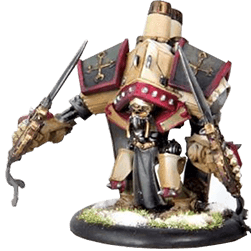Jan. 25, 2020
The famous Dr. Needham attributed the invention of playing cards to the Chinese around the 11th century. At that time, playing cards were also called Ye Zi Xi, which is also the earliest prototype of ancient playing cards that can be verified worldwide. Later, Marco Polo brought this card game from China to the European continent, and became popular all over the world. After Chinese cards were introduced to Europe, they followed the four suits of cards, but countries gave different names and cultural meanings. Below, please follow our Board Game Manufacturer to see how the playing cards are made.
1. Poker paper
The paper used for playing cards is custom made by paper mills. Two layers of cardboard are bonded with colored glue. This structure prevents the cardboard from being seen through.
2. Storage environment
The paper used for playing cards needs to be absolutely flat from storage to manufacturing. The warehouse will use industrial humidifiers to control the humidity of the card stock to prevent the cardboard from deforming due to drying.
3. Paper test
Workers regularly test the temperature and humidity of the paper by inserting a flat detector uniformly 1.2 meters below the top of a stack of 3,000 sheets. A deck of 54 cards was printed on the same cardboard, and the whole was cut into a single card.
4. Check the sample drawing
Before making a printing template, the technician checks the design of the cardboard. Not only checking the version on the computer, but also printing a low-resolution sample image, carefully checking the suit color, order, color and layout of each card, and confirming the correctness of the sample image before printing. This inspection method is commonly used for high-volume printing, whether it is newspapers, books, calendars, or posters.
5. Film proofs
The next step is to make a digital proof, which is film. A special printer's internal laser conducts the heat of the colored foil dots onto the blank film. These dots perfectly reproduce the content and color of each card. Then use a forging press to expose the film and press it on the cardboard for playing cards to make a proof that can be exactly the same as the printed card.
6. Adjust the design
The manufacturer will compare the printed proofs and let the graphic designer adjust the hand drawing of the poker, such as adding colors or adding details, so as to make the playing card more gorgeous and luxurious. After this round of operation, the layout design of the playing card is officially completed.
7. Printing equipment
Make physical drawings before printing. The computer controlled the laser to etch the new design electronic draft onto the surface of the polymer printing plate. The process of etching is relatively slow. The machine below can only make 30 patterns per hour.
Cards Game
8. Inject ink
The worker then injects thick, blue, black, red, and yellow ink into the cartridges of an industrial printing press. Each color ink passes through 16 rollers to ensure even spraying. The paper feeder uses negative pressure adsorption to feed the pile of paper into the printer one by one.
9. Multicolor Overprint
Each printing plate is mounted on a rotating roller, which will print the ink on the plate, and then the paper is transferred to the next rubber pad, which is printed one color at a time. The printed cardboard on one side is pressed by a rubber pad, and the printed paper is flattened and stacked each time. Then I turned the paper over and sent it to the printing machine to print the back side, or multi-color overprinting. The picture below shows the blue back side.
10. Crop
After the front and back sides are printed, the cardboard is fed into the cutter, and the rotating roller blade cuts the cardboard into strips first. Crosscut it into individual cards.
11. Cut fillets
A piece of printed cardboard comes out with a set of cards, which are assembled into a pair and sent to a pair of rounded corners. A neat stack of cards was instantly cut by the die with four square corners.
12. Plastic packaging
The playing cards were pushed onto a conveyor belt and were wrapped in cellophane. Each time the plastic package is sealed, a robotic arm grips the cellophane scroll to pull it down. After wrapping the playing cards, the heating rod is lowered to seal the plastic to make an envelope. This is a lot of fun, fun, and easy-to-carry poker.
The above is the whole process of playing cards introduced by Cards Game Manufacturer. Hope to help you.
